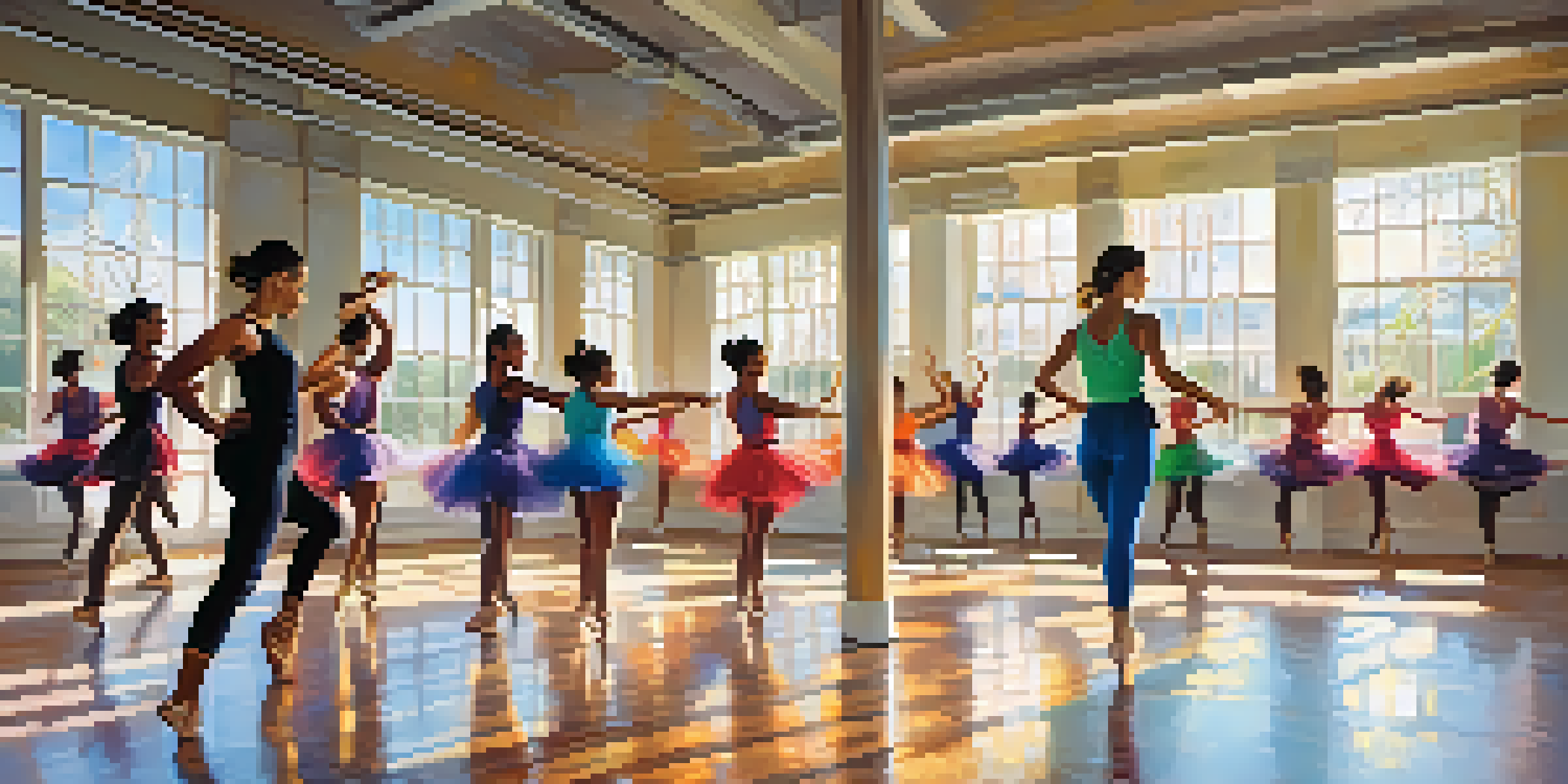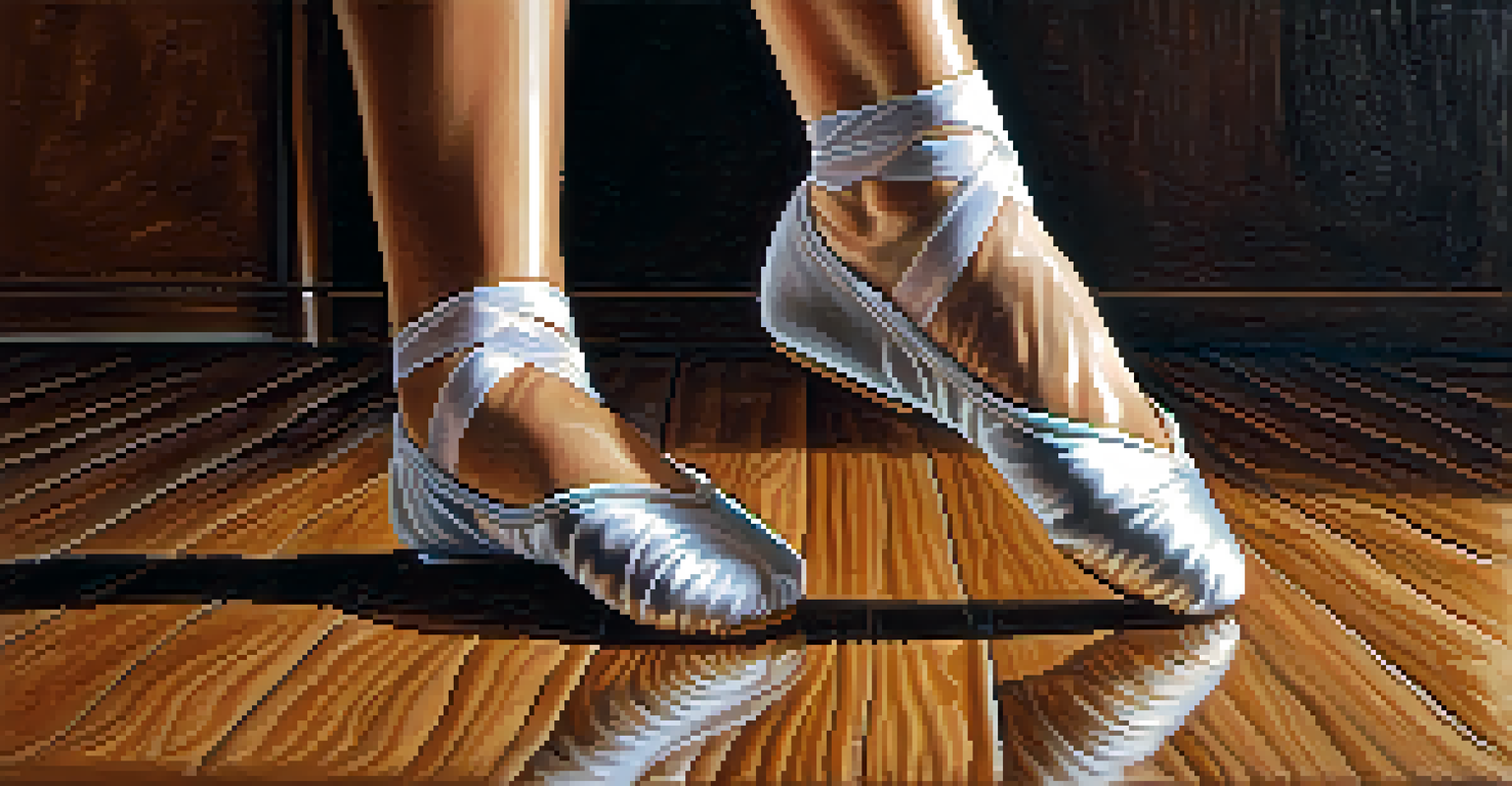Choreographic Techniques: Methods and Approaches Explained

Understanding Choreography: The Basics Explained
Choreography is the art of designing sequences of movements in dance. It's not just about steps; it encompasses the relationship between dancers, music, and the overall theme of a performance. Understanding the fundamental principles of choreography can help dancers express emotions and tell stories through their movements.
Dance is the hidden language of the soul.
At its core, choreography combines creativity and structure. Dancers and choreographers often draw inspiration from various sources, whether it's personal experiences, cultural influences, or even visual art. By grasping these basics, one can appreciate the intricacies involved in creating a compelling piece.
Moreover, choreography serves as a bridge between the dancer and the audience, taking them on a journey. The right techniques can evoke feelings and leave lasting impressions, making the understanding of choreography essential for anyone involved in dance.
Improvisation: The Freedom in Movement
Improvisation in choreography allows dancers to explore movement spontaneously. It encourages creativity and can lead to unique, unexpected outcomes that structured choreography might not allow. By letting go of preconceived notions, dancers can discover new ways to express themselves.

This technique often serves as a warm-up exercise, helping dancers connect with their bodies and their emotions. For instance, a dancer might start with a simple phrase and then let their body respond to the music or the environment around them. This practice can spark innovative ideas for future routines.
Choreography Blends Art and Structure
Choreography combines creativity and technique to express emotions and tell stories through dance.
Improvisation also fosters collaboration among dancers, as they can build off each other's movements in real time. This communal aspect not only enhances creativity but also strengthens the bond between performers, making the art form even more dynamic.
Narrative Choreography: Telling Stories Through Dance
Narrative choreography focuses on storytelling, where each movement contributes to a larger narrative. This technique transforms dance into a powerful medium for conveying emotions and plot. Think of it as a visual storybook, where every gesture adds depth to the tale.
Choreography is the art of making things seem effortless.
Choreographers often use characters, settings, and conflicts to shape their pieces, allowing audiences to connect emotionally with the performance. For example, a dance might depict a journey of love or loss, with each dancer representing different aspects of the story. This connection can create a profound impact on viewers.
The beauty of narrative choreography lies in its ability to transcend language barriers. Through movement, it can communicate universal themes that resonate with people from different backgrounds, making it a truly inclusive form of art.
Spatial Awareness: The Importance of Space in Dance
Spatial awareness is crucial in choreography, as it determines how dancers occupy and interact with their environment. Understanding the use of space can enhance the overall impact of a performance. It involves not just where dancers move, but how they relate to each other and the audience.
Incorporating different levels and formations can create visual interest and dynamics. For instance, having dancers perform in a circular formation can symbolize unity, while vertical movements can express aspiration or tension. Effective use of space can elevate a dance from good to unforgettable.
Improvisation Sparks Creativity
Improvisation allows dancers to explore spontaneous movement, leading to unique expressions and collaborative performances.
Moreover, spatial awareness encourages dancers to be mindful of their surroundings, which can enhance safety and coordination. By mastering this technique, dancers can ensure that their performances are not only beautiful but also well-executed.
Rhythm and Timing: The Heartbeat of Choreography
Rhythm and timing are essential components of choreography, acting like the heartbeat of a dance piece. They dictate how movements are executed in relation to the music, creating a sense of flow and energy. Understanding these elements can transform a simple sequence into a captivating performance.
Dancers often practice counting beats and understanding musical phrasing to enhance their timing. For example, a dancer might emphasize certain beats to create dramatic pauses or swift transitions, adding excitement to the routine. This attention to rhythm helps in establishing a connection between the dancer and the music.
Furthermore, mastering rhythm can lead to dynamic performances that resonate with audiences. When dancers synchronize their movements perfectly with the music, it not only captivates viewers but also showcases the skill and artistry involved in choreography.
Stylistic Approaches: Exploring Various Dance Genres
Different dance genres come with their own choreographic techniques and styles, offering a rich tapestry of movement possibilities. From ballet's precision to hip-hop's improvisational flair, each genre has unique characteristics that influence choreography. Exploring these styles can broaden a dancer's repertoire and creativity.
For instance, contemporary dance often emphasizes fluidity and emotional expression, while jazz might focus on sharp, energetic movements. Understanding these stylistic nuances allows choreographers to draw inspiration from various sources and incorporate elements that resonate with their vision.
Narrative Enhances Emotional Impact
Narrative choreography uses storytelling elements to create emotional connections with the audience through dance.
Incorporating diverse styles not only enriches a performance but also allows for greater innovation. By blending techniques from different genres, choreographers can create fresh and exciting works that push the boundaries of traditional dance.
Collaborative Choreography: The Power of Teamwork
Collaborative choreography involves multiple dancers and choreographers working together to create a piece. This approach values each participant's input, fostering a sense of community and shared creativity. When dancers contribute their ideas and movements, the final product often reflects a beautiful synthesis of diverse perspectives.
This technique can lead to innovative and dynamic performances, as different voices come together to shape the choreography. For example, a group of dancers might share their individual stories, culminating in a performance that celebrates their unique backgrounds while highlighting their collective strength.

Additionally, collaboration can enhance problem-solving and adaptability within the group. Dancers learn to communicate effectively and support one another, creating a positive environment that encourages growth and exploration in their craft.
Conclusion: The Art and Science of Choreography
Choreography is both an art form and a scientific endeavor, requiring creativity, technique, and collaboration. By understanding various methods and approaches, dancers can enhance their skills and elevate their performances. Each technique offers unique advantages, contributing to the rich tapestry of dance.
As dancers experiment with different choreographic styles, they unlock new potentials within themselves and their art. Whether through improvisation or narrative choreography, the journey of exploring these techniques is as rewarding as the performance itself.
Ultimately, choreography serves as a powerful means of expression, allowing individuals to share their stories and connect with audiences. By embracing the diverse methods and approaches, dancers can continue to innovate and inspire through the medium of movement.